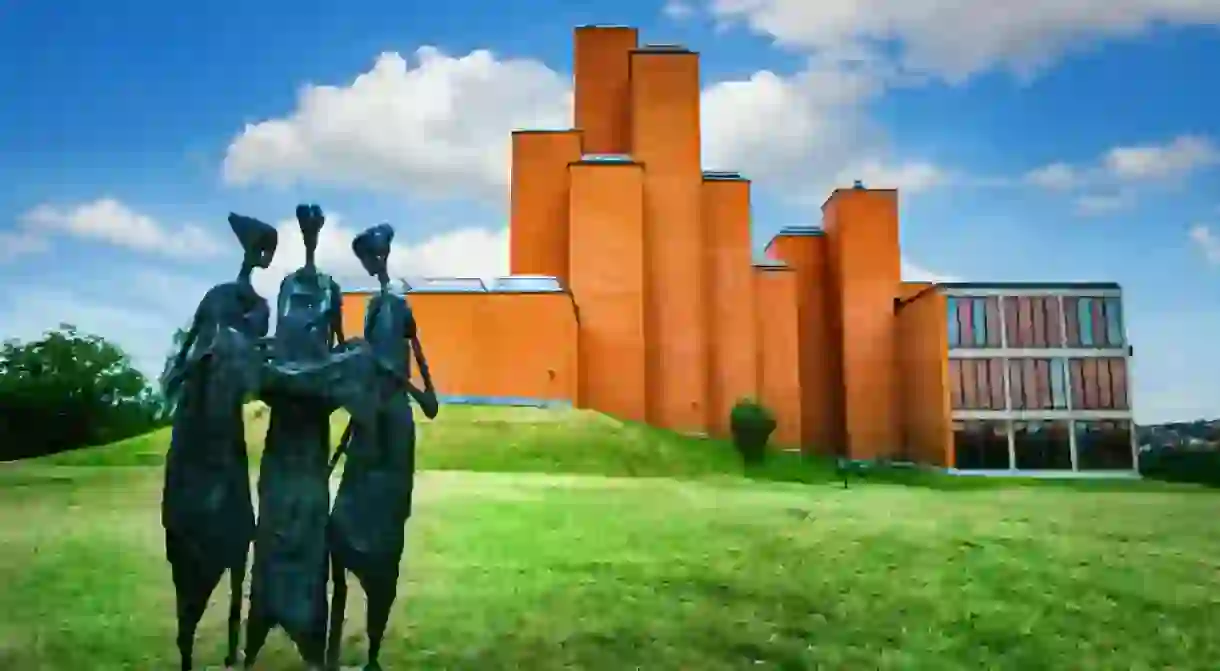10 Amazing Regions To Visit in Serbia

Like the finest Russian doll, Serbia becomes ever more engaging and enveloping the deeper into it you go. Each district has plenty to offer the prospective visitor. For the record, Banat and Bačka will be treated as individual districts, in the name of geographical fairness and a reticence to just type ‘Vojvodina is awesome’ all over the place.
Banat
With that in mind, let’s get the two out of the way first. Banat (which essentially means ‘frontier province) is a geographical region in Central Europe that is split between Serbia, Romania and Hungary, with Serbian Banat subsequently split up into Central, North and South districts. All three are within the territory of Vojvodina, and many of Serbia’s most magnificent towns are found in these parts.
The position along the border with Romania offers a different cultural atmosphere to the rest of Vojvodina, but Zrenjanin is undoubtedly a Serbian town with a most Serbian heart. Kikinda is home to the largest temporary owl stopping point on the planet, while gritty Pančevo brings culture and personality to the table.

Bačka
The wider Bačka region is divided between Serbia and Hungary, and again within Serbia into North, South and West portions. If you only visit one region that isn’t Belgrade, this is your best bet. Novi Sad is one of the finest cities in the region, a lively town full of aesthetic magnificence and regional charm, a charm that is taken to new levels in Sombor and Sremski Karlovci.
Subotica dominates the North Bačka area, with its hugely impressive City Hall at the centre of attention. In terms of bang for your buck, Bačka is up there with anywhere else in Europe, let alone Serbia.

Srem
Sticking with Vojvodina, Srem might not offer the wide array of gorgeous towns that can be found in Banat and Bačka, but don’t rule it out entirely. Small town Serbian life is well and truly visible here, and those looking for a warts-and-all experience need look no further. There is history, too, and Sremska Mitrovica was one of the four most important cities of the early Roman Empire.
Raška
Moving from the north to the west, Raška is one of the most influential regions of Serbia when it comes to pure history. The past is everywhere here, whether in the old ruins of Stari Ras, the memorable coronations of Kraljevo, the monasteries of Studenica, Sopoćani and Žiča, and even the Turkish influence in Novi Pazar, Serbia’s only Islamic majority city.

Šumadija
Kragujevac is the administrative centre of Šumadija, and Serbia’s fourth largest shift rarely gets the respect it deserves. The centre of the Serbian automobile industry, the city is home to a hugely impactful memorial park and no shortage of history, being as it was the first capital of modern Serbia.
There is plenty in the region outside of Kragujevac, including the famous Oplenac mausoleum. A church above the town of Topola, visitors flock to see the final resting places of the Karadjordjević family, although just as many visit to see the incredible mosaic of the interior.

Kolubara
The city of Valjevo holds a special place in the hearts of many Serbs. The Partisan movement was particularly strong in these parts, and the most iconic Serbian image of World War II was taken here. The image in question is particularly grim, as it captured the last moments of the life of Stjepan Filipović. Filipović was at the gallows with a noose around his neck, but he found enough defiance to throw his arms in the air and shout ‘Smrt fasizmu! Sloboda narodu!’ (Death to fascism! Freedom to the nation!) before taking his last breath.
Valjevo is the centre of Kolubara, one of the westernmost districts of Serbia. It remains the epicentre of life here, although Divčibare remains a popular tourist mountain.

Zlatibor
Speaking of mountains, the Zlatibor district is defined by its eponymous hill. This could be the most inviting region of them all. Tara National Park is a must-visit for anyone in Serbia, while the grace of Mokra Gora, Drvengrad and the Šargan Eight railway also demand attention.
Bajina Bašta is just a short walk from the iconic House on the Drina River, and Mileševa Monastery is home to the most iconic fresco in all of Europe. Užiće, the administrative capital, could be lost in it all, but the town holds a fire and life that offers a different type of excitement altogether.

Zaječar
Eastern Serbia doesn’t get the love or attention it deserves, despite being home to some of the most impressive natural monuments in the country. The Zaječar and Braničevo districts vie for the most attention, but the underrated eponymous town and historical pull of Gamzigrad gives the nod to the latter. Knjaževac and Sokobanja are definitely worth a look as well.

Nišava
You may be able to work it out from the name alone, but Nišava is named after the river which gives its name to Serbia’s third largest city. Niš is a fantastic city for visitors, engaging those looking for history, culture or simple good food. Niška Banja is nearby, a tranquil centre for those hoping for some respite from the conveyor belt of rakija and grilled meat.

Belgrade
While technically not a district in itself, the capital city of Serbia dominates in such a fashion that it simply cannot go without mention. It transcends districts, after all. The White City is one of Europe’s finest, a vibrant melting pot of history and culture that offers some of the finest nightlife and most wonderful people on the planet. The defiant passion (‘Inat’, to be precise) of those people will inevitably bring you back time and time again.














